- Category
- War in Ukraine
Ukrainian Soldiers Endured 70 Days Under Russian Siege in Chasiv Yar, A Tale of Survival
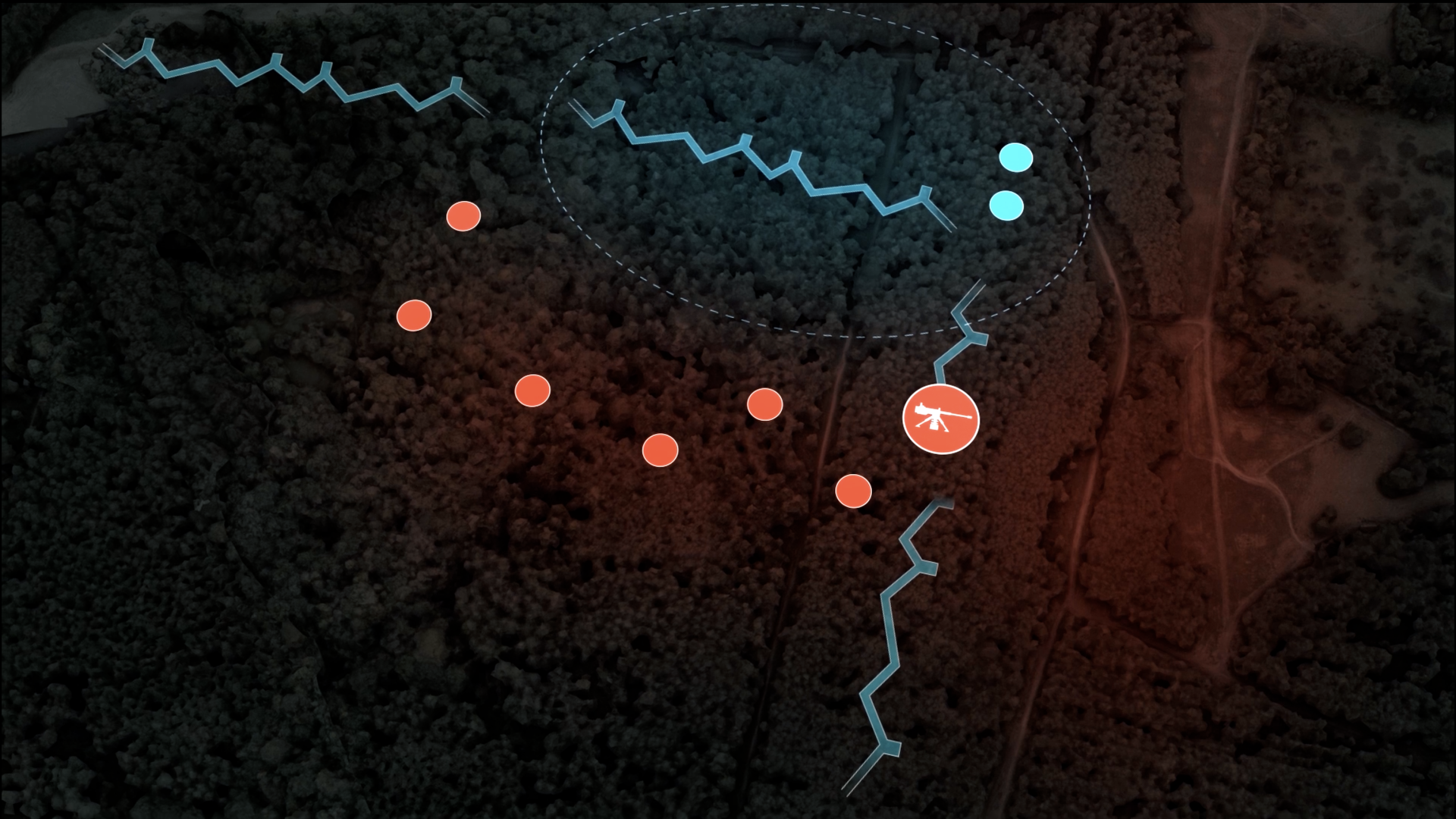
Ukraine’s 225th Assault Battalion has been defending the city of Chasiv Yar in the Donetsk region for over four months. Several positions ended up surrounded by Russian forces, forcing the soldiers into a 70-day circular defense until the battalion finally broke through.
We visited the command post of the 225th Assault Battalion to speak with the soldiers and the company commander responsible for the operation. As we approached, the 2nd company chief sergeant, call sign “Swan,” pointed to the devastated buildings nearby. When they first arrived, he explained, these houses were intact, with families still living in them. Today, only ruins remain. The Russians are now on the city's doorstep, and the city itself is on fire.
The encirclement
Russian forces have entrenched themselves along the Siversky Donets-Donbas canal, where the 225th Battalion is the only unit still holding positions beyond the waterway. This section of the front is particularly challenging, with soldiers facing relentless frontal and flank attacks. A single strong push by the Russians across the canal could lead them straight into Chasiv Yar. The battalion is doing everything in its power to prevent this, keeping the enemy fixated on their position. Despite four months of intense efforts, the Russians have yet to break through.
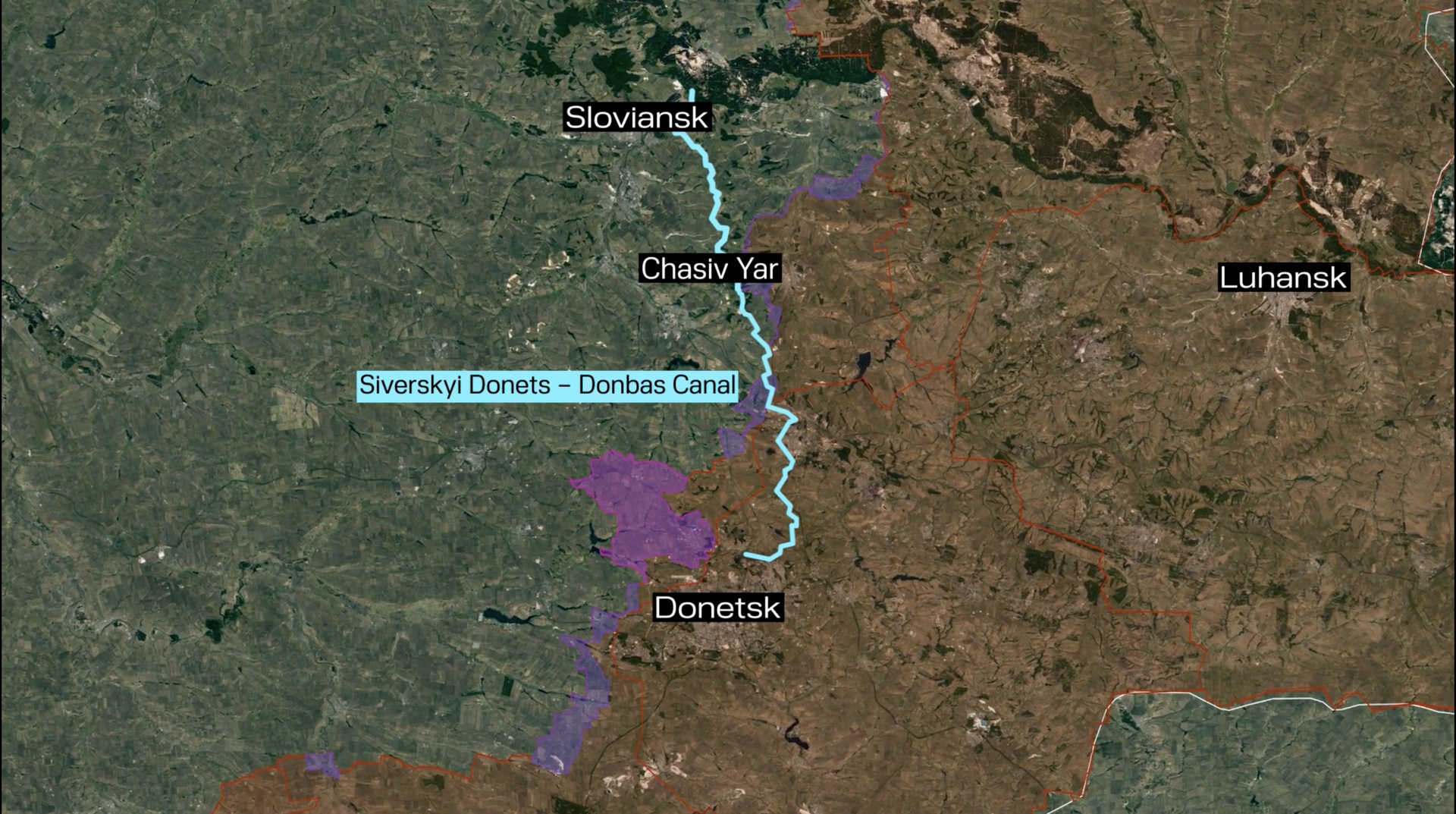
“Our first task was to dig in,” recalled “Cat,” a 2nd company soldier who spent 70 days encircled.
“Take the position, dig in. We were supposed to be pulled out in a few days.”
Battles began and the Russians executed a successful flanking maneuver, cutting off several Ukrainian positions from the main forces. It allowed them to infiltrate between the Ukrainian positions and their neighboring units, effectively isolating seven positions held by 15 soldiers from the 225th and 223rd Battalions. For many of these soldiers, this was their first combat mission.
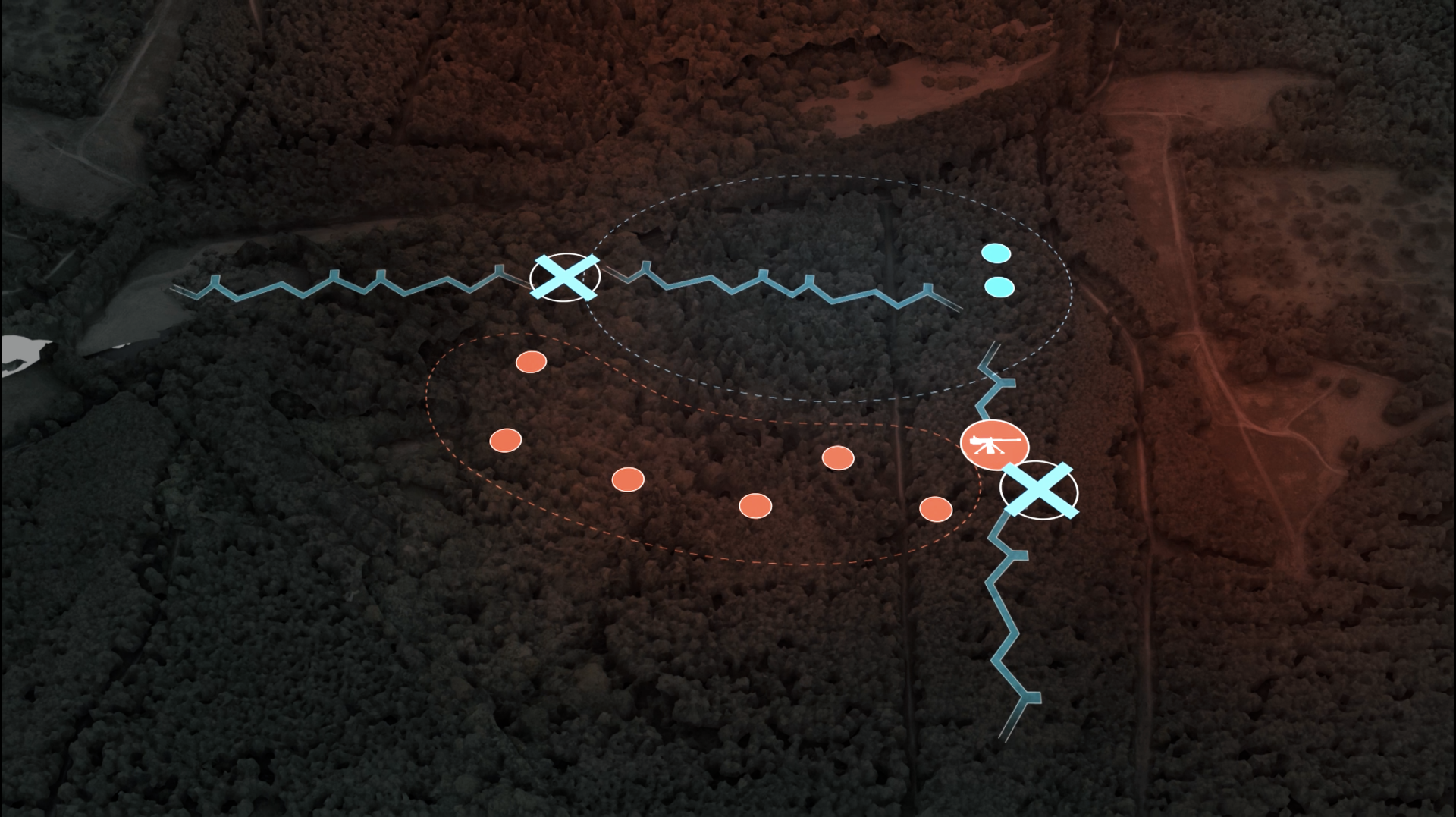
As the Russians advanced, they fortified their positions around the Ukrainian soldiers, setting up machine-gun points and digging in, tightening the encirclement. This flanking attack severed communication and supply lines, putting immense pressure on the Ukrainian soldiers, who were now surrounded and under constant attack from multiple directions. The situation forced them into a circular defense, fending off frontal and flank attacks while waiting to break the siege.
“Hello everyone! This is our, fucked-up forest,” said “Daddy,” a 2nd company soldier, one of the trapped in the siege.
During the rare quiet moments in those 70 days of hell, “Daddy” took the time to film how they lived, showing the work area, the clock position, the rear, and the nearest Russian position—just 40-50 meters away.
“Sometimes it was 20 meters, sometimes 30,” said “Cat.”
“There were even times when it was just five meters — here he [Russian soldier] is, standing right in front of you.”
The toughest times came when waves of Russian assaults hit their positions. Digging in was a lifesaver. The Ukrainians would return fire, but when mortars rained down, they had to lie flat, hiding deep in the ground. Daddy showed his helmet, which had been struck by a fragment but managed to stop it from penetrating.
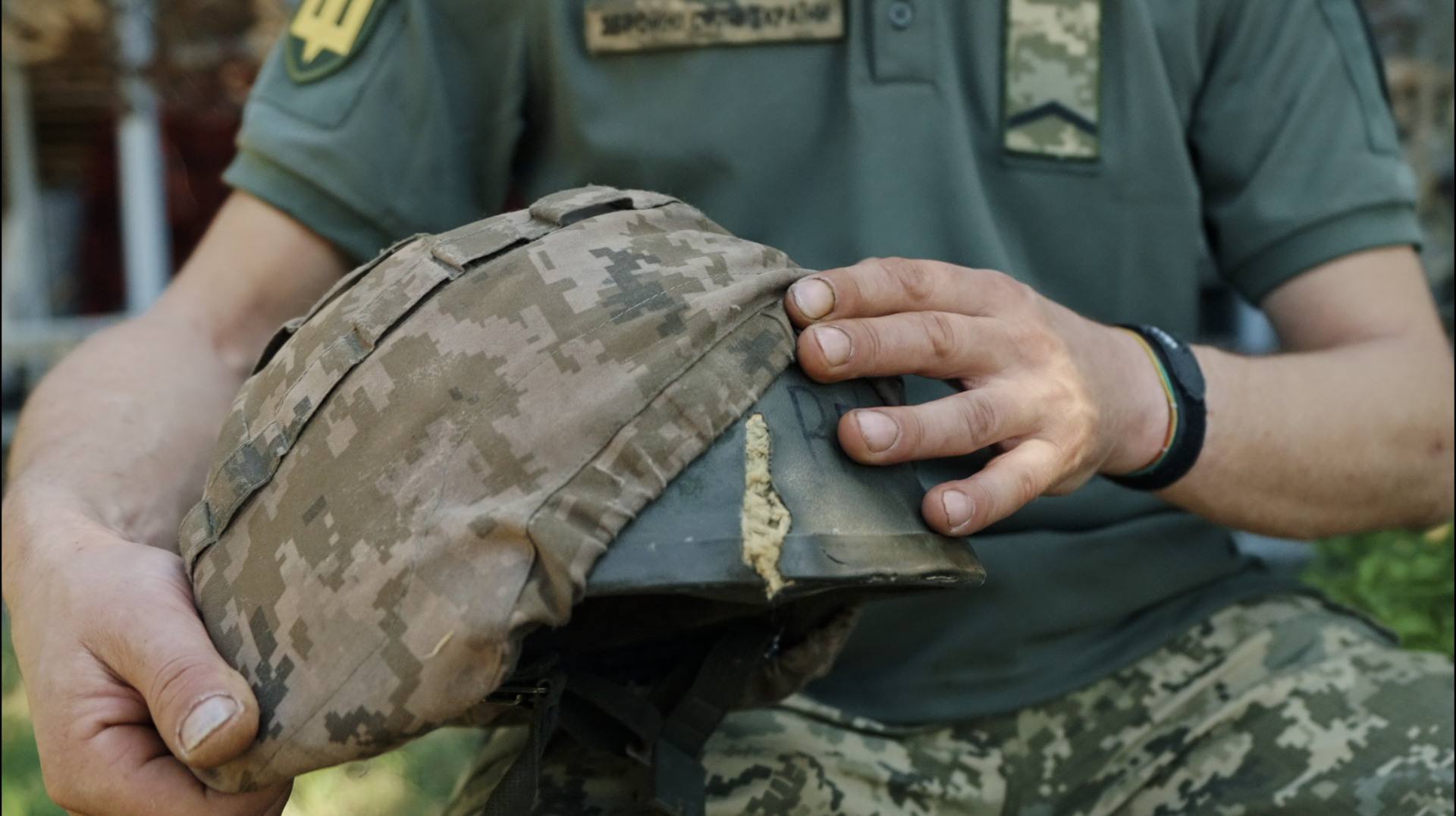
“If it weren't for our commanders, their support, maybe I would have lost my mind,” said the 2nd company soldier “Brown.”
The command quickly informed the soldiers of their dire situation and laid out their course of action. What followed were several days of fierce fighting, with the Russians attempting to crush the besieged positions, yet without success.
"We knew that we were at the position and that we were surrounded," said “Daddy.”
"It was either you or them."
The air corridor
The situation was dire, but the soldiers held on. In addition to the Russian troops around them, the summer heat and lack of supplies posed a significant danger to the soldiers. The men filtered water from puddles, possibly even urine, depending on the situation. Initially, their walkie-talkies were running low.
But Ukraine’s strike UAV team came to the rescue.
They delivered a package drop containing power banks, allowing the soldiers to recharge and get back in touch. Thanks to this crew, the servicemen were able to physically last 70 days encircled. To provide them with everything they needed, the night bomber crew served as a supply delivery team.
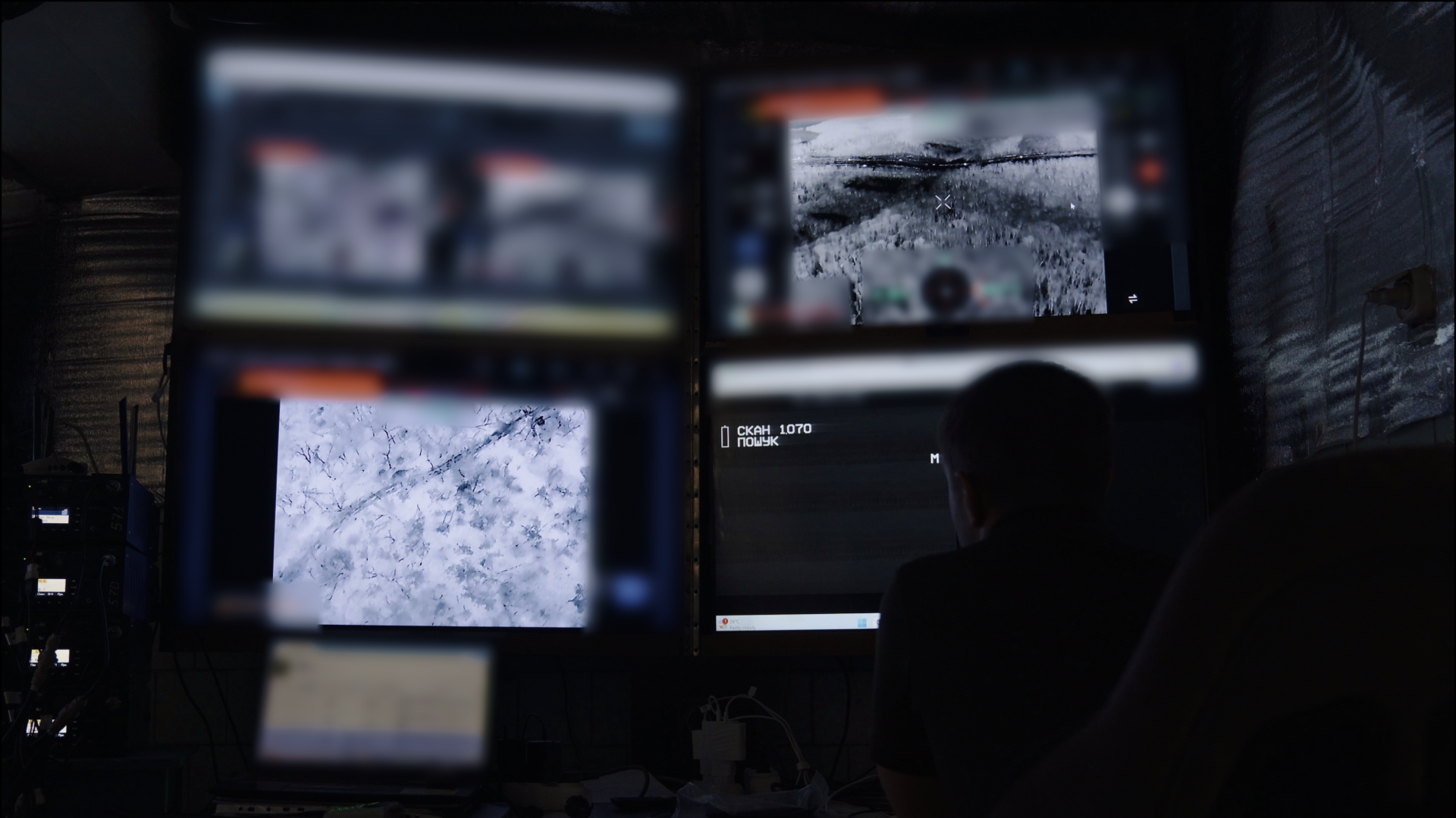
The most valuable resources were water and food. The packages contained water, dry rations, porridge, and soups. Sometimes, there was chocolate, candy, and even cigarettes. Ammo was retrieved somewhat differently.
“You kill a bastard, take their ammo, take the gun—there’s something to shoot with,” said “Cat.”
Even now, bringing supplies by car or on foot to the area held by the battalion is suicidal. Although the soldiers have already broken through the encirclement, the drone operators continue this practice. To demonstrate the level of danger, Strike UAV Platoon Commander Anvar pointed to a screen image showing the Ukrainian positions.
“It’s all red hot because the bastards are constantly shelling it,” he explained.
“We agree with the guys on a spot where we will drop the package. Here goes the package, and as soon as the guys receive it or see or hear where it fell, they say everything is fine, we got it. And we fly to take another package.”
The most useful deliveries during the siege were surprisingly the sweets.
“As the commander said, ‘we’ll drop you some munchies,’” recalled “Brown” with a smile. He said that these small things, like chocolate candies, were exactly what they needed to take a mental break from the hardships of war, to remember childhood, and to feel assured that strong support was behind them.

The breakthrough
“The guys needed to be rescued and pulled out,” said the 2nd company commander, call sign “Chip.”
Before the breakthrough, the battalion ensured that the Russians couldn’t rotate their troops. The Russian soldiers behind them were trapped, unable to move in or out, which weakened their positions and allowed the Ukrainian soldiers to break through. The weather also played a role, as rain began to fall, grounding the Russian drones and preventing them from bombing the Ukrainian soldiers. This allowed the fighters to start clearing a path to reach the surrounded 15.
“I thought that I could be captured,” said “Cat.”
“I wasn't going to surrender because I didn't want to be captured alive. I constantly thought that I wouldn't see my loved ones again.”
The distance from the battalion’s farthest position to the besieged soldiers was 160-170 meters. What could have seemed like a short distance became a long and difficult journey due to the dense forest and rough terrain. The battalion took its time to avoid risking the rescue group and the surrounded soldiers. With that, they created, so to speak, a corridor to them.
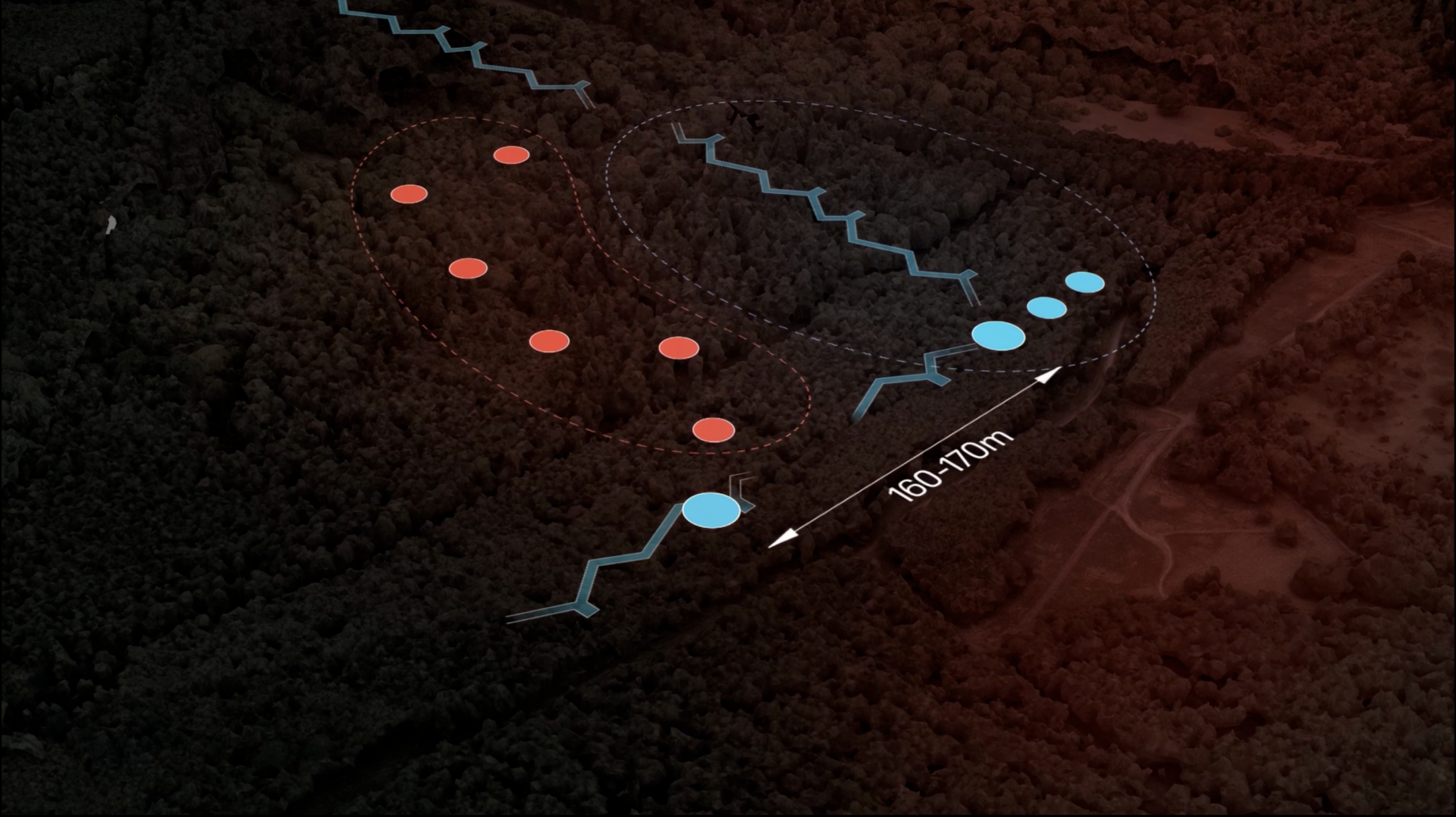
“Every person, every serviceman has a mother, a father, a wife, and children,” said “Daddy,” wiping away a tear as he thought about his family.
“Everyone was worried. But it is what it is. Now everything is fine.”
During the 70 days of encirclement, the soldiers did not lose a single position. Now, they have been granted 10 days of vacation for recuperation. After the break, they will return to combat missions.
“We still need to drive these assholes off our land,” said “Brown.”
“If we don't, we'll be just like sheep. I'm free, I don't want to be a sheep.”
If you liked the story, consider directly supporting the heroes—the 2nd company of the 225th Battalion—via their PayPal: trueoleg86@icloud.com. Thank you.


-c42261175cd1ec4a358bec039722d44f.jpg)
-46f6afa2f66d31ff3df8ea1a8f5524ec.jpg)
-6359eca46c72bde40a90abaaadd6eaa8.png)
-29a1a43aba23f9bb779a1ac8b98d2121.jpeg)


-206008aed5f329e86c52788e3e423f23.jpg)